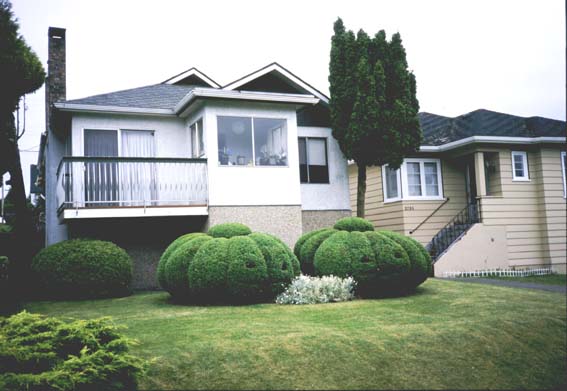land as art
When does landscape become art? This is something I am asked all of the time about my own ‘botanical interventions’. Over time, vegetative landscapes lose some of the aura of the artist , gardener or horticultural dramaturge and develop a life of their own. But when maintained, they undeniably resonate the aesthetic sense of their creator.
I love driving around the suburban periphery of Vancouver, which is in many ways a city of demented gardens. The lysergic rampancy of vegetation engendered by the rain forest climate butting incongrously against the banality of the cookie-cutter architecture often makes me think that I am on another planet.
Vancouver is a city that labours under the burden of the thousands of failed utopias, projected onto it by everyone who gets sucked into its humid gray vortex. It is the end of the road, the end of the continent – the terminal beach. Everyone seems to be looking for something – some desperately.
Is it paradise which they seek? The junkie prostitute with the bleeding legs, scraping manically at the dust with her fingernails in a Downtown Eastside alleyway is looking for it. The Kitsilano professionals are looking for it also, fleeing up to Whistler in their gleaming metal losenges of exquisite German automotive engineering, slurping latés with the top down.
But it is in their gardens that I think many Vancouverites come closest to finding what they are looking for.
Or rather, it is in the garden that one can create in vegetatitive microcosm one’s own version of paradise, reflecting hopes, aspirations and nostalgia for distant times and faraway places.
Vancouver’s moderate climate and abundant rainfall enable every suburban tract to serve as a protean utopia, ready to be coaxed into any vegetative possibility.
Chinese windmill palms, Scottish heather, Californian sequoias, Italian figs and Japanese flowering cherries all compete in a crazy botanical cornucopia to colonize the tabula rasa left by the clearcutting of the ancient Douglas fir and western red cedar rainforest that once covered the city. These botanical mammoths exist now only in relic form- a few stragglers in the centre of Stanley Park- solemn reminders of the now reversed figure/ground relationship between the extirpitated natural ecosystem and the ‘Kulturlandschaft’- the landscape transformed by human activity.
Simon Schama has an interesting take on this figure-ground dynamic between culture and nature in his Landscape and Memory which tracks the history of our relationship to landscape by mirroring it in our relationship to art.
Viewed in their totality, Vancouver’s suburban gardens recede into our “optical subconscious” as we travel through the neighbourhoods, flavouring our journey but not overwhelming us with ideology or didacticism.
Yet the dialectic of class and identity lurks beneath the seething shrubbery and the verdant turf.
For example, working class immigrants from China often dispense with backyard lawns altogether, upon setting up house in Vancouver. Unburdened by the now diminutized North American notion of living in ersatz 18th century English manor houses, set amid minion-tended greensward, they grow bok choi, garlic chives, Chinese wolfberry and bottle gourds right up to the back door. These productive kitchen gardens are a testament to Confucian ideals of practicality, self sufficiency and economy and the landscape thus created is unapologetically Guangdong- not Giverny.
Italians-Canadians drink their Grappa under carefully tended bowers of grapes and figs, the nostalgic leafy architecture of a half-remembered bacchanalia, transplanted from the ancient sun-soaked earth of the Mediterranean to the rainswept patios of Burnaby.
And then occasionally, very occasionally, somebody creates a landscape so utterly idiosyncratic that it transcends simplistic analyses.
So here it is:

(East Vancouver landscape at Kaslo and East 7th)



